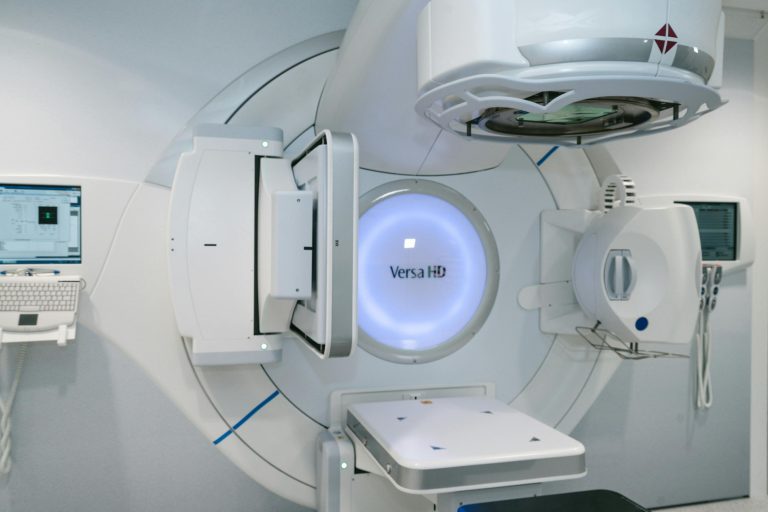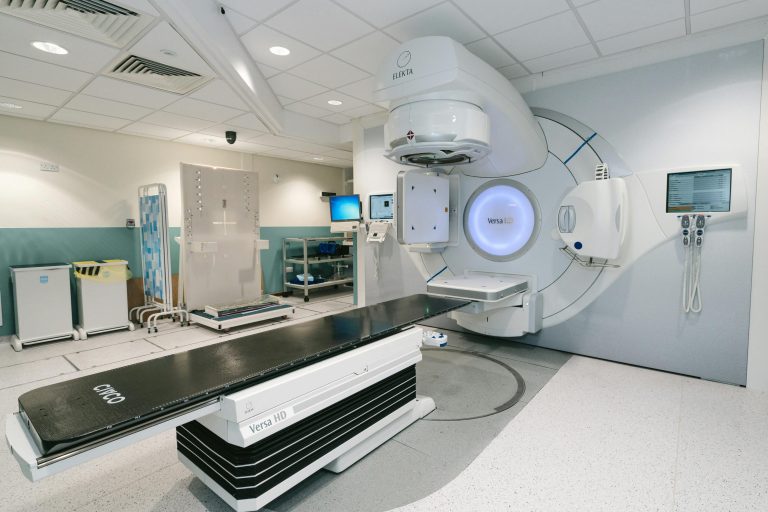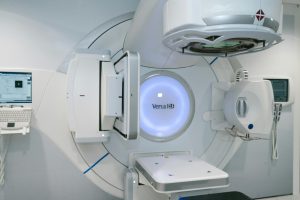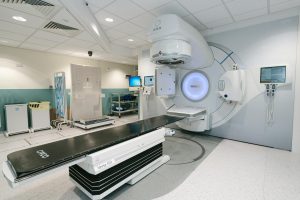Can you give me about 1000 words about the “Linear Accelerator Treatment” in a hospital?
What is the Linear Accelerator Treatment in a Hospital?
Linear Accelerator (LINAC) treatment is one of the most advanced and widely used methods for delivering radiation therapy to cancer patients in hospitals. This technology has evolved to offer precise, targeted treatment with minimal damage to surrounding healthy tissues, making it a preferred choice for treating various types of cancer. Here is an in-depth look at the linear accelerator’s role in hospitals, how it operates, the patient experience, and its advantages in modern cancer treatment.
1. Introduction to Linear Accelerator Treatment
A Linear Accelerator (LINAC) is a sophisticated machine used in radiation oncology departments in hospitals worldwide to treat cancer. It generates high-energy X-rays or electrons directed precisely at a tumor to destroy cancer cells. This equipment is highly effective in targeting cancerous tissues while preserving healthy surrounding tissues. By emitting controlled radiation beams, the LINAC ensures that each treatment is tailored to the specific shape, size, and location of a tumor, improving outcomes and reducing side effects.
2. How LINAC Treatment Works
The LINAC machine operates by accelerating electrons to nearly the speed of light. When these electrons strike a heavy metal target, they generate high-energy X-rays (photons) that can penetrate deep into the body. The machine’s gantry (the rotating part that holds the radiation source) can move around the patient in various angles, allowing oncologists to target the tumor from multiple directions. This flexibility is essential for protecting healthy tissues and delivering the maximum radiation dose precisely where it’s needed.
Key Components of a LINAC Machine
1. Electron Gun: Produces electrons, which are accelerated by the machine.
2. Accelerator Guide: Electrons travel through this guide, where they gain speed.
3. Magnet System: Guides the electron beam and focuses it.
4. Heavy Metal Target: Electrons hit this target to produce high-energy X-rays.
5. Beam-Shaping Device: Shapes and adjusts the radiation beam to match the tumour’s shape.
3. Treatment Planning and Precision
LINAC treatment involves a meticulous planning process that often takes place days or weeks before the first radiation session. Once a cancer diagnosis has been made and LINAC is identified as the treatment, the oncology team uses imaging technology—like CT scans, MRIs, or PET scans—to map the exact location of the tumor. Sophisticated software then designs a treatment plan that calculates the radiation dose and angles to target the cancerous cells optimally.
Image-Guided Radiation Therapy (IGRT)
To ensure accurate targeting, LINAC treatment often incorporates Image-Guided Radiation Therapy (IGRT). IGRT enables real-time imaging to confirm that the patient’s position aligns with the pre-designed treatment plan. By confirming alignment immediately before or even during radiation delivery, IGRT enhances the precision of each treatment session, which is particularly important for tumours that may shift slightly due to patient breathing or other body movements.
Intensity-Modulated Radiation Therapy (IMRT)
Another enhancement available in LINAC treatment is Intensity-Modulated Radiation Therapy (IMRT). IMRT varies the intensity of the radiation beams, allowing for precise dose distribution. By adjusting the strength and angle of the radiation beams, oncologists can target complex-shaped tumors that are located near sensitive organs or tissues. IMRT is beneficial for treating cancers of the head, neck, prostate, and lungs, where surrounding organs require careful preservation.
4. Types of Cancer Treated with LINAC
LINAC can treat many cancer types, making it a versatile option in oncology departments. Some commonly treated cancers include:
Breast Cancer: LINAC effectively targets tumors within the breast, minimizing radiation exposure to nearby organs.
Prostate Cancer: Precise targeting allows treatment of the prostate with reduced risk to the bladder and rectum.
Head and Neck Cancer: IMRT and LINAC combined allow for careful targeting in complex areas of the head and neck.
Lung Cancer: LINAC can treat lung cancer while minimizing exposure to the heart and healthy lung tissue.
Brain Tumors: LINAC’s precision is critical for treating brain tumors due to the need to avoid sensitive brain structures.
5. Patient Experience and Safety
LINAC treatment generally requires multiple sessions over several weeks, with each session lasting about 10-15 minutes. During each session:
1. Preparation: The patient lies on a treatment table in a position based on the pre-established treatment plan. Technicians may use molds or immobilization devices to ensure they remain still.
2. Alignment: Technicians confirm positioning using IGRT, making any necessary adjustments.
3. Radiation Delivery**: The gantry rotates around the patient, delivering radiation from multiple angles. The patient hears whirring sounds but experiences no pain.
4. Post-Treatment: Most patients can resume normal activities immediately after each session, although some may experience mild side effects.
Safety Measures in LINAC Treatment
Hospitals implement extensive safety protocols for LINAC treatments. The linear accelerator room, also called a vault, is specially constructed with thick walls to contain radiation. Technicians monitor each session from a separate control room, equipped with communication systems to check on the patient. Regular calibration and quality assurance tests ensure the machine operates accurately.
### 6. Advantages of LINAC Treatment
LINAC treatment offers numerous benefits, making it a preferred choice for hospitals treating cancer:
1. Precision and Accuracy**: The machine’s ability to target tumors with sub-millimeter accuracy minimizes damage to healthy tissues.
2. Adaptability: LINAC can treat a wide range of cancers, including those with complex shapes or locations.
3. Customized Treatmen: LINAC systems support individualized treatment plans, offering flexibility in beam intensity and direction.
4. Minimally Invasive: LINAC treatment is non-surgical, allowing patients to avoid recovery times associated with traditional surgery.
5. Short Treatment Sessions: Each session lasts only a few minutes, requiring minimal disruption to patients’ daily lives.
7. Technological Advancements in LINAC
The technology behind linear accelerators continues to evolve, with new developments enhancing their effectiveness and expanding their application in hospitals. Some advancements include:
Stereotactic Body Radiation Therapy (SBRT)**: This technology uses higher doses of radiation over fewer sessions, often proving effective in treating small, well-defined tumors.
Adaptive Radiation Therapy (ART)**: ART allows clinicians to adjust treatment based on changes in tumor size or patient anatomy during the treatment course, enabling more personalized care.
Artificial Intelligence (AI)**: AI is now used in LINAC treatment planning, helping to improve accuracy in mapping and dose calculations, which reduces planning time.
8. Challenges and Limitations
While LINAC treatment offers impressive advantages, it also has some limitations. For example:
Cost: LINAC machines are expensive, costing millions of dollars, which can be a significant investment for hospitals.
Specialized Staff: LINAC operation requires highly trained radiation oncologists, medical physicists, and technicians, making it resource intensive.
Side Effects: Although LINAC treatment minimizes damage to healthy tissue, patients may still experience side effects like fatigue, skin irritation, or temporary hair loss in the treatment area.
Linear Accelerator treatment is a cornerstone of modern radiation oncology, bringing hope to millions of cancer patients by offering precise, non-invasive treatment. Its integration into hospital oncology departments has revolutionized cancer care, allowing for customized, safe, and effective treatments that target tumors while preserving healthy tissue. As technology advances, the future of LINAC treatment holds even more potential, with improved targeting, adaptive capabilities, and AI-driven planning.















